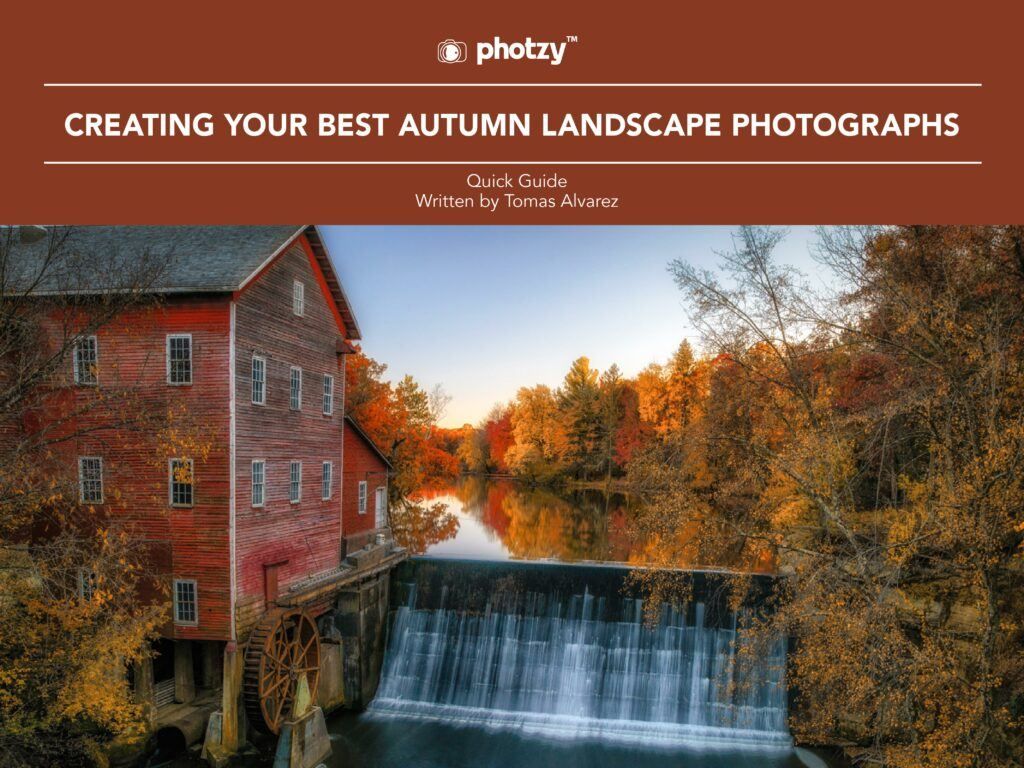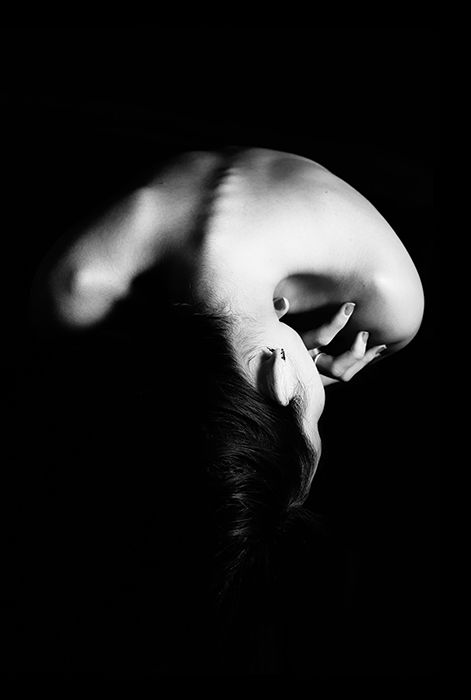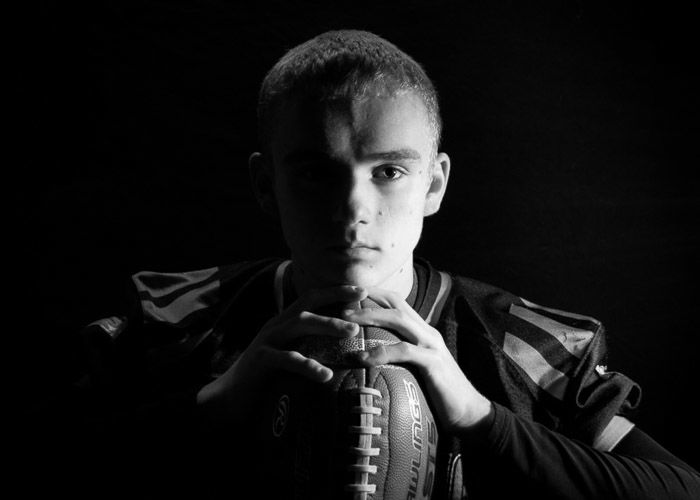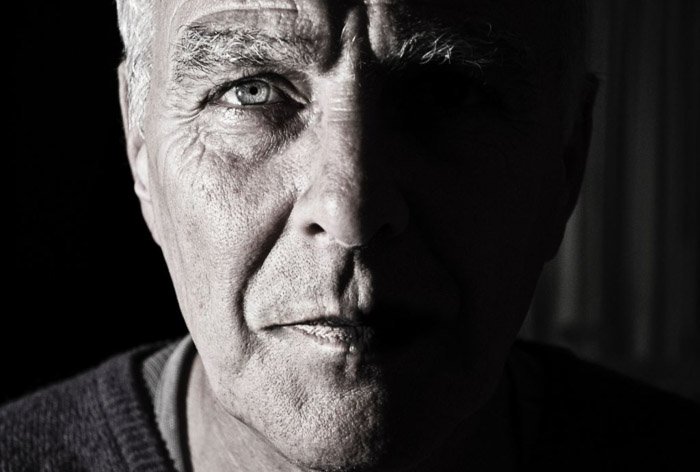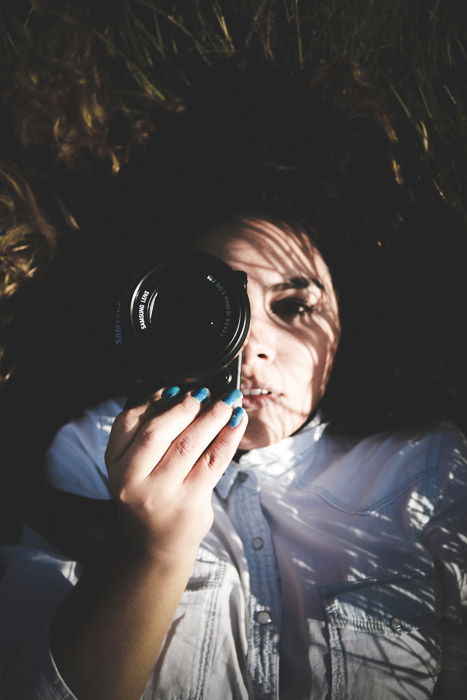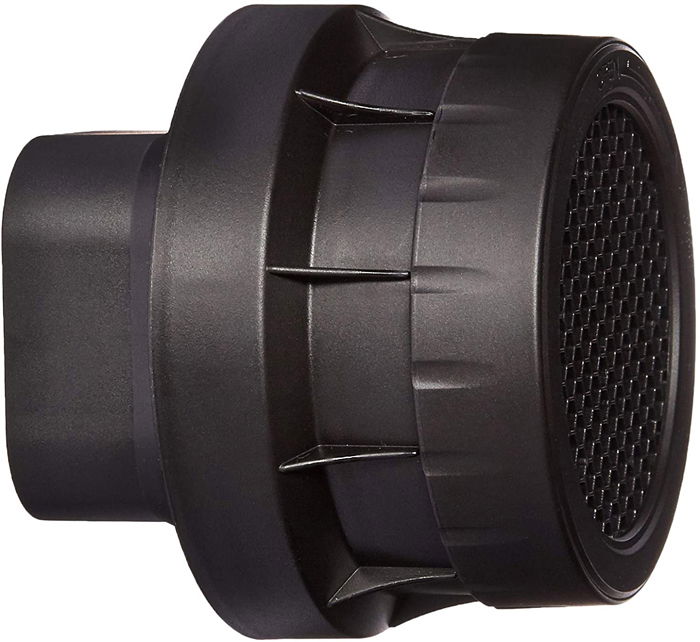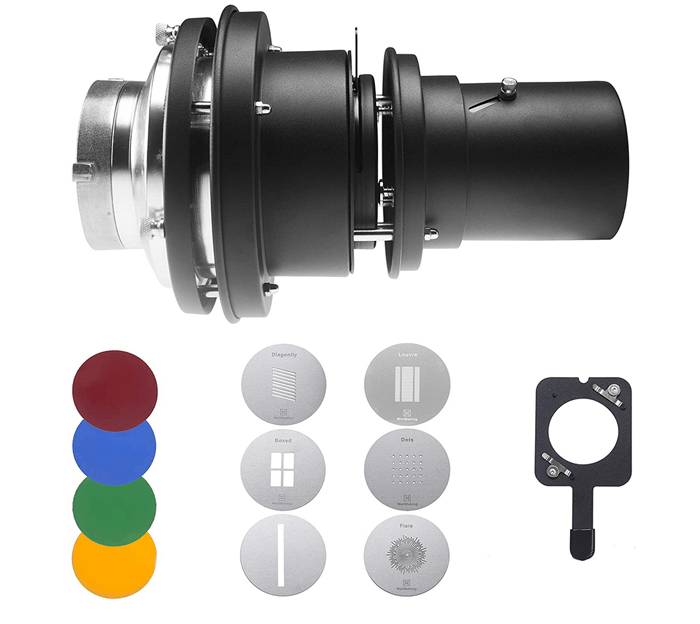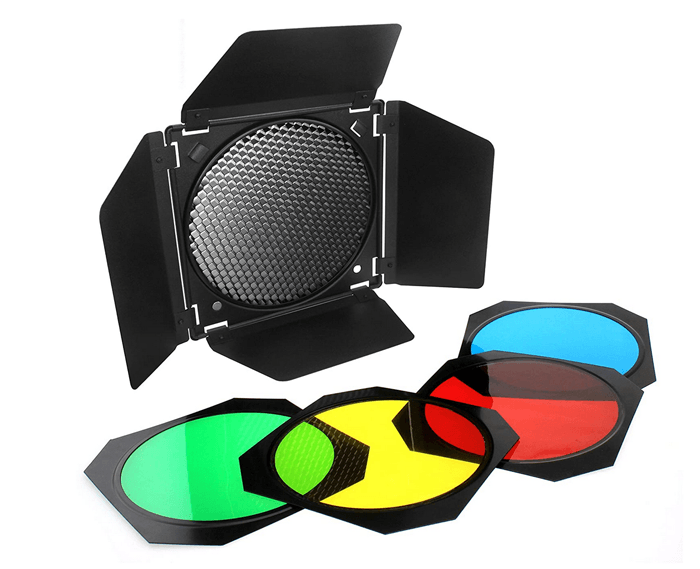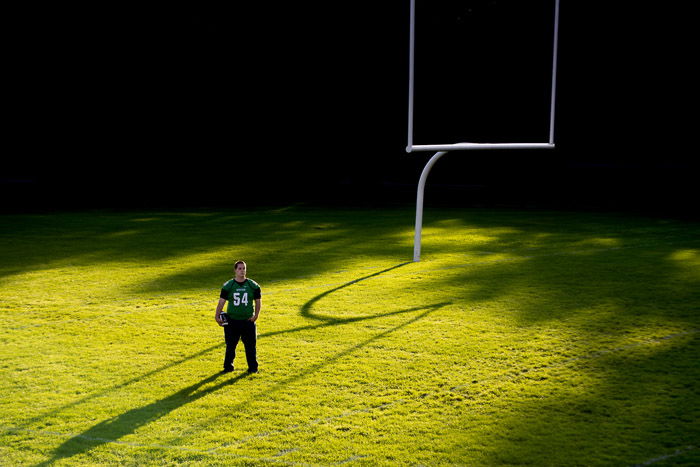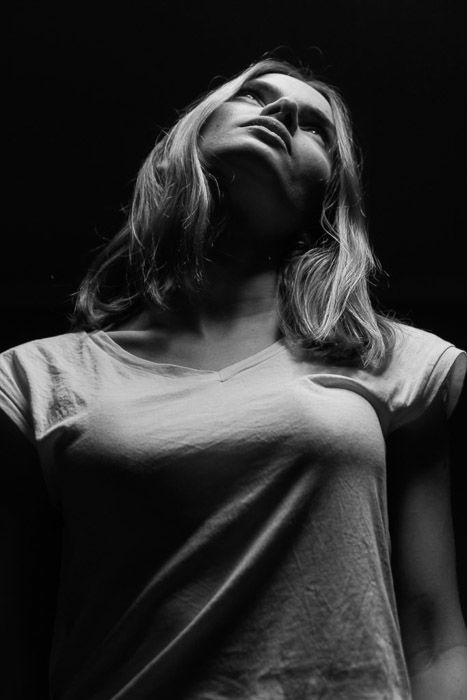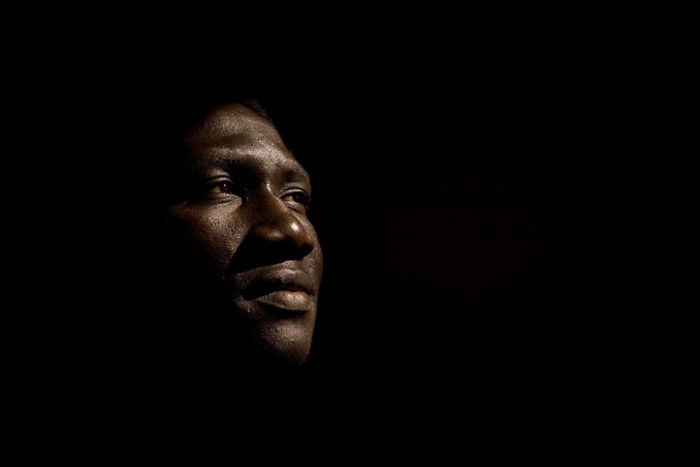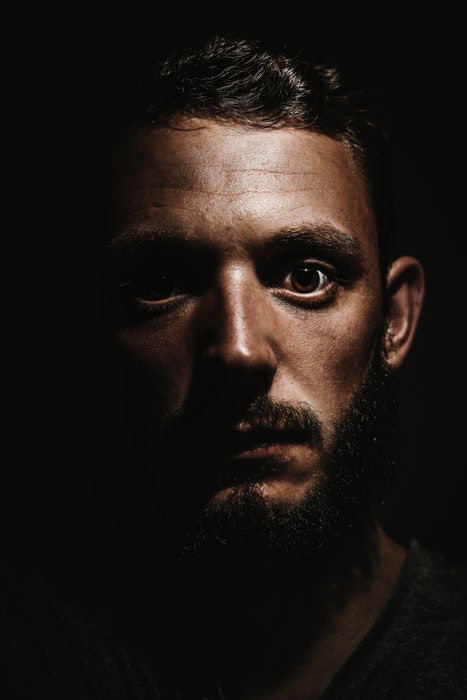What Is Surreal Photography: 12 Examples
Surreal photography challenges its admirers to change their
perspectives, question their values, and create something unforgettable.
This unique genre has inspired many photographers to recreate their
wildest dreams.
When surrealism was still young, photographers created their own worlds
using darkroom tricks and optical illusions. Today, we can create our
own peculiar worlds using real-life objects (e.g. Oleg Oprisco), editing
programs (e.g. Rosie Hardy), or both.
Below, you’ll find 12 prime examples of surreal photography. The images,
which are as diverse as their creators, are testimonies to the value of
surrealism.
No matter how simple, complicated, or unusual the surreal photography is, it has the power to influence anyone who takes the time to observe it.
Underwater Portrait
Velizar Ivanov’s work is both haunting and graceful. His portfolio is filled with surreal underwater photos, portraits, and heartwarming photos of family members.
To take this photo, Velizar asked his daughter to swim in an aquarium
while he took photos through the front glass. This resulted in surreal, well-lit portraits.
His daughter’s calm expression, outfit, and floating hair all create a
dreamlike atmosphere, reminiscent of something you’d see on the cover of
a fantasy book.
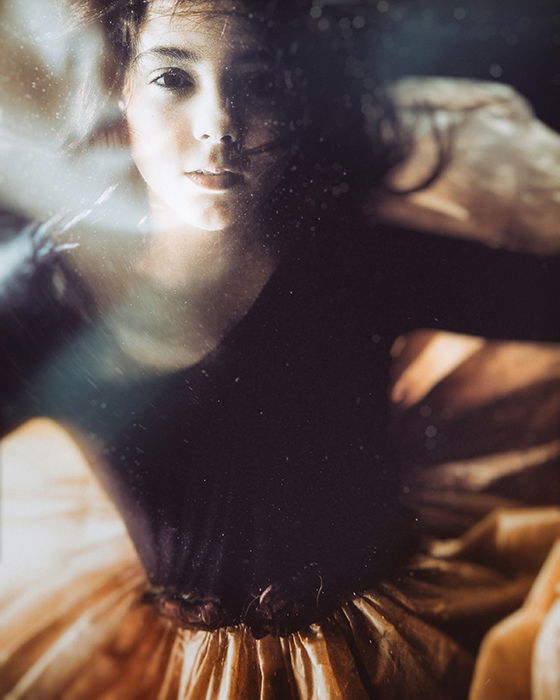
Underwater Landscape
This real and unedited view was perfectly photographed by Alexandra Rose. The angle, composition,
and monotonous colours all work together to create an underwater
photography masterpiece. The most haunting thing about this image is the
formation of the fish; together, they look like a very large tail
devouring a scuba diver.
Surreal photography often features people and things submerged in water.
Given the mysterious and unpredictable nature of water itself, this
makes sense. Photographers like Brooke Shaden often use this technique
to express fragility, change, and hope.
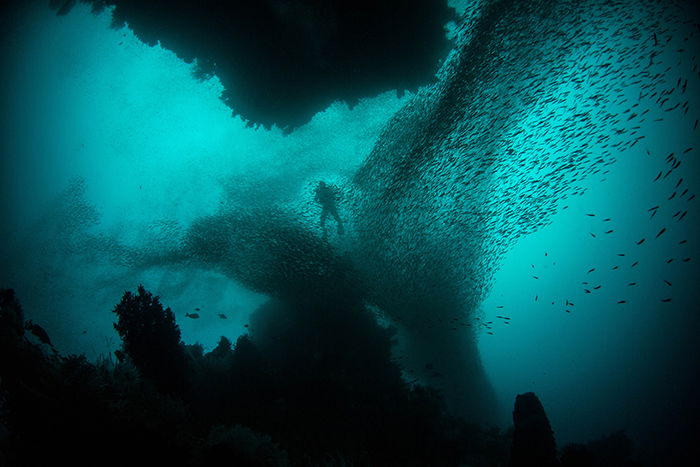
Food & Drink
Simple colour correction transformed a food photograph into a surreal work of art.
Elijah O’Donell cleverly desaturated almost every cherry and slightly
increased the contrast to create an even more dramatic feel. The result
is striking surreal photography whose story completely depends on your
perspective. Is the cherry a reflection of loneliness, pride, or
desperation?
Surreal photography allows room for the ambiguous, the strange, and the
mind-boggling. Oftentimes, this leads to a lot of fascinating
conversations with no definite answers. Sometimes, a simple editing tool is all it takes to create such discussions.
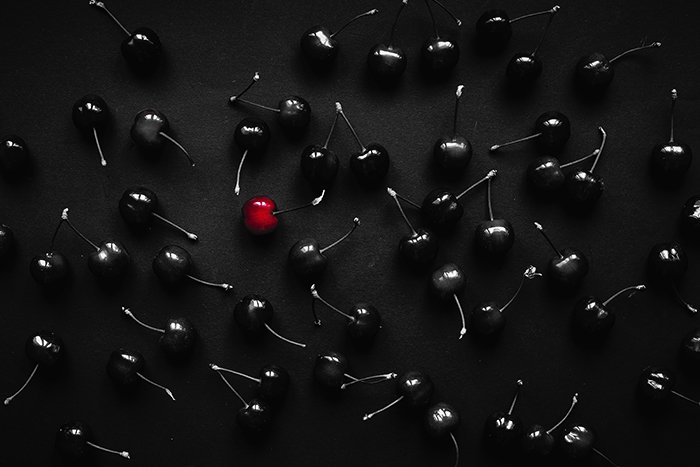
Glamour
Closeups, discos, and aliens. These three words might come to mind
when you look at this photo by Jill Heyer, who created a series of
sparkling surreal photographs inspired by blacklight photography.
“We suggested that we could use the colors as sparkles to create a
stunning galaxy feel. That is the outcome. We plan to do another series
following real star signs on faces and bodies.”
With the help of glow-in-the-dark makeup, Jill created a series of unconventional beauty shots. Though the model‘s
features are visible, her eyes are as dark as the background. The
combination of obscure colors and almost inhuman features are what make
this photo an ideal example of surreal photography.
Spontaneous Surreal Photography
Like Alexandra’s underwater photograph, this surreal photography
image wasn’t manipulated. Since we can’t see everything, we’re not sure
what is going on. Was the subject modeling or playing? Where was this
taken? These questions exist only because of that tent, which was
strategically placed in front of the camera. Only Earl can answer them,
but he wisely chooses not to. After all, guessing is much more fun than
getting the real answers. (Sometimes.)
Maybe, if the tent-like material weren’t in the way, this photo would
reveal a joyful child playing outdoors. By placing a barrier between the
model and camera, Earl was able to create something spontaneous and
surreal: a haunting figure slowly vanishing into thin air.
This is something we can all use in our own surreal photography. If you
have a semi-transparent material, place it in front of a light source
and experiment with various models. Your results will all have a hint of
surrealism in them.
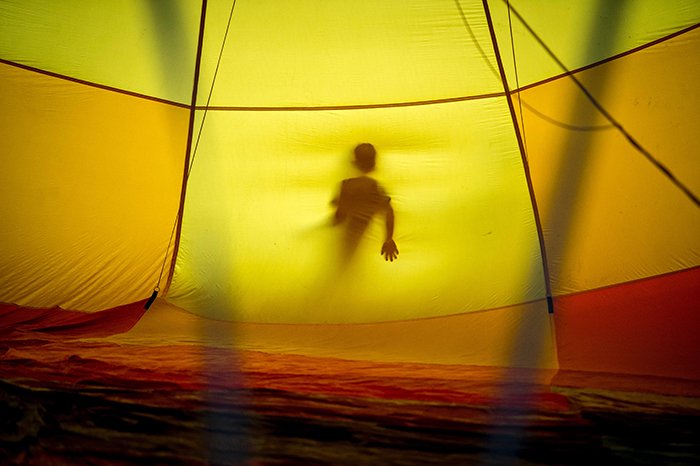
Landscape
Emile Seguin’s photograph may be very simple, but it compels viewers
to stare and wonder about the model, location, and style. This minimalistic approach to surreal photography isn’t as easy as it looks. Emile probably invested hours of editing work into this shot.
Bare landscapes
like this are almost impossible to find in today’s world, which is why
this photo stands out. Remove what the human eye is used to, and you’ll
get results that will astound everyone. Removing mountains, buildings,
and any other signs of life were Emile’s way of expressing isolation and
an adventurous spirit.
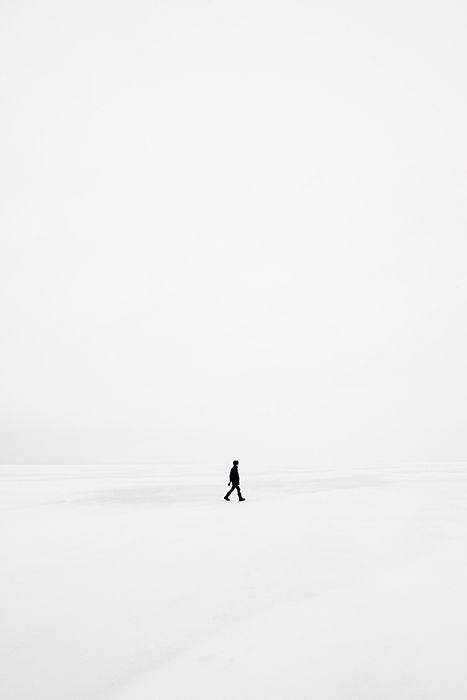
Photo Manipulation
This post-apocalyptic surreal photography masterpiece by Hans
Eiskonen is undeniably eerie. The details — rising smoke, snow, a cloudy
sky, and other details — all speak of abandonment. However, the bus
seems to be the only haunted subject in Hans’s universe. Other objects,
like the street lamp, suggest remaining signs of life. Why is the bus
rotting in a place full of people? We can only guess.
By expertly introducing unfamiliar concepts, surreal photography turns
the world upside down. This is probably why dystopian worlds are so
popular. We respond to this unfamiliarity with nothing but curiosity and
admiration.
Hans isn’t the only photographer who relies on extreme photo
manipulation to create such detailed photos. A large percentage of
photographers — Rosie Hardy, Alex Stoddard, Kyle Thompson — do this to
experiment with surrealism’s limitless possibilities.
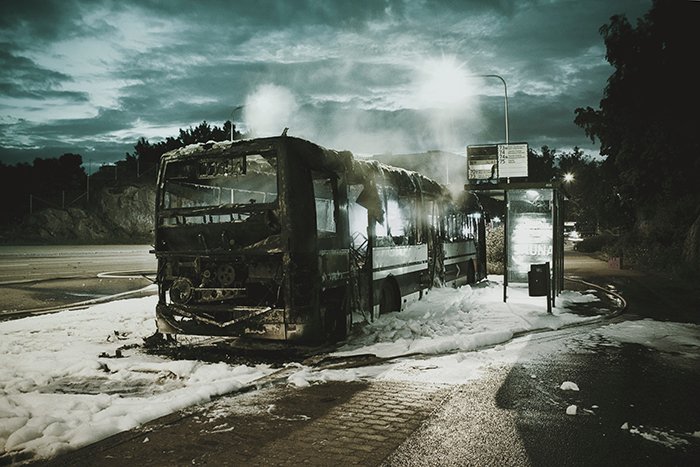
Conceptual Surreal Photography
When you look at this photo, what do you see? A frustrated student
trying to prepare for an exam, a girl getting lost in her own fictional
world, or something completely different?
Surreal photography has various sub-genres, like conceptual surrealism,
which focuses on multiple themes using multiple objects. Photos made for
this genre are filled with striking details. Unlike Emile Seguin’s
work, they’re far from simple. (This doesn’t mean that Emile’s work is
inferior to this genre, or that conceptual surrealism is too
complicated. In surreal photography, there’s enough room for both
types.)
Laci Slezak’s portrait is filled with multiple themes and lots of detailed subjects. Since the model’s face is barely visible,
it’s hard to tell what she’s trying to express. While this is something
that would be seen as confusing in classic portraits, it’s lovingly
embraced in surreal photography.
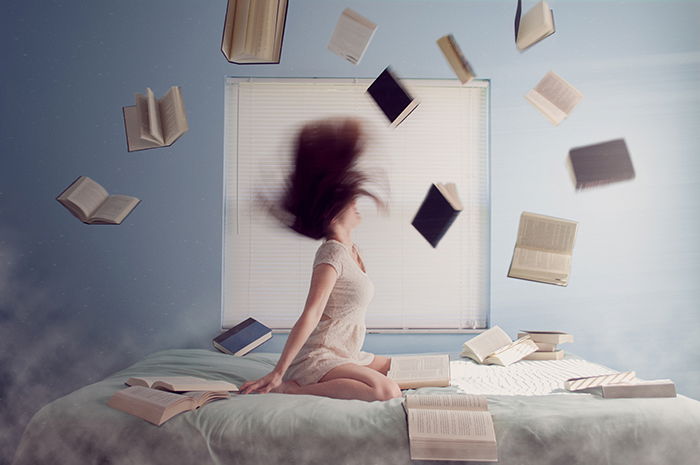
Closeup Surreal Photography Portraits
If it weren’t for the angle and concept, this photo would just be a
striking portrait. However, Mickael Cresset chose to zoom in, conceal
his model’s face with water, and shoot from an angle that emphasised the
reflection’s movements. For these reasons, he’s a fantastic example of a
surreal photographer.
Moving objects play an important role in surreal photography. Take, for
example, the mesmerising beauty of long-exposure photography. Though we
know what the subjects are, we can’t get enough of seeing them in silent
motion. You can easily merge long-exposures with surrealism to create unique photographs.
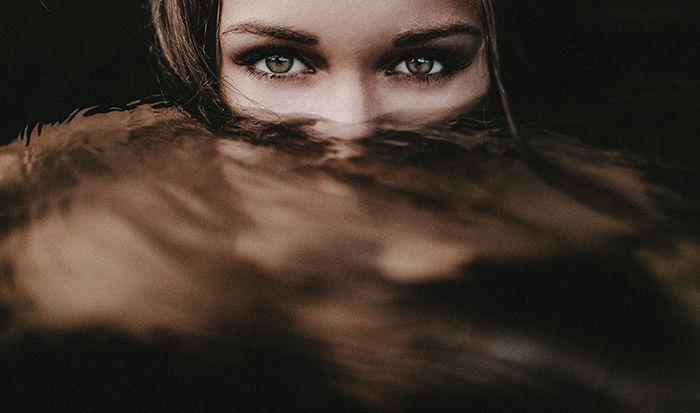
Conceptual Self-Portrait
As you may have noticed, surreal photography is often filled with
subjects that you wouldn’t see in your everyday life. In this photograph
by Natalya Letunova, a girl is silently observing three hot air balloons. Had they not been there, this photo would look much simpler.
The addition of unusual elements plays an important part in surreal
photography. You don’t always need expert editing skills to add
interesting objects to your simple portraits. All you need is a big
imagination and the willingness to learn.
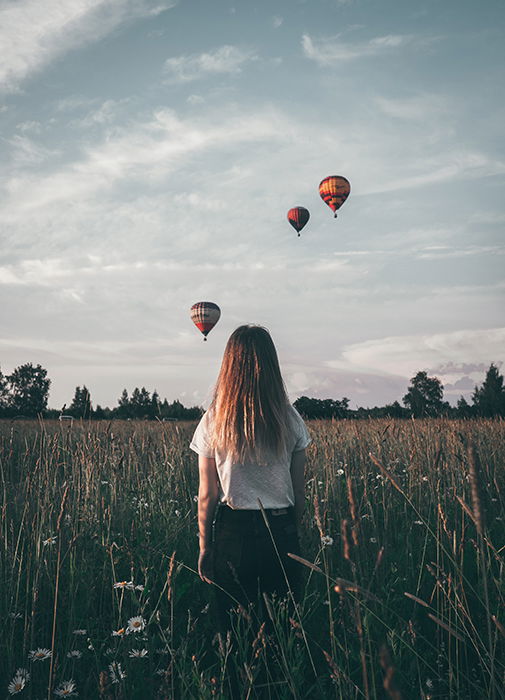
Architecture
More often than not, surreal photography features unusually large
objects. Oliwier Gesla did this using vibrant sculptures of insects,
skyscrapers, and a cloudy sky. Though it looks like a manipulated photo,
it’s actually real:
“I took this photo on my way to the Eureka Sky deck which I didn’t even
end up going to because the price was a bit hefty. During this day in
Melbourne, I only took about 10-15 photos but I can easily say that this
one is one of the all-time favorite photos that I’ve ever taken.”
What stands out the most in this photograph are the insects,
which glow in comparison to their surroundings. While the story is
ambiguous, the aesthetic appeal is very clear. Oliwier chose to slightly
de-saturate everything but the sculptures, creating a striking
composition that could only appear in our dreams.
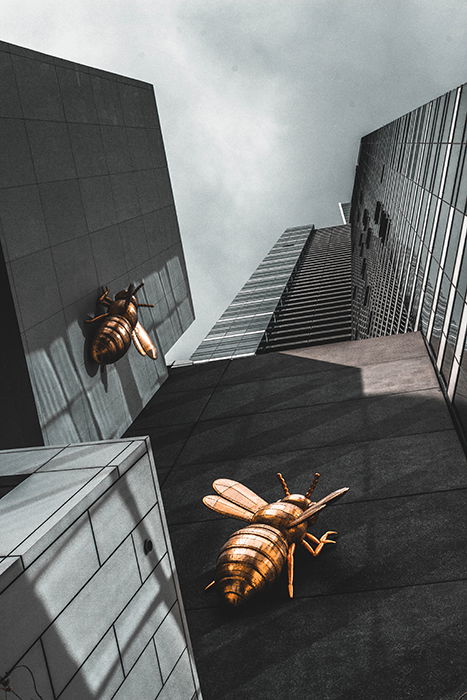
Still Life
You don’t always need sculptures, abandoned buses, or levitating
books to create impressive surreal photography. Saffu’s photo of a
floating umbrella proves that simple objects can be fascinating, too.
Most of Saffu’s gallery is full of stunning travel photos of the
Maldives. The photo below, an experiment with surrealism, is one of his
most popular images. This proves just how well people respond to surreal
photography and how little you need to make something unforgettable.
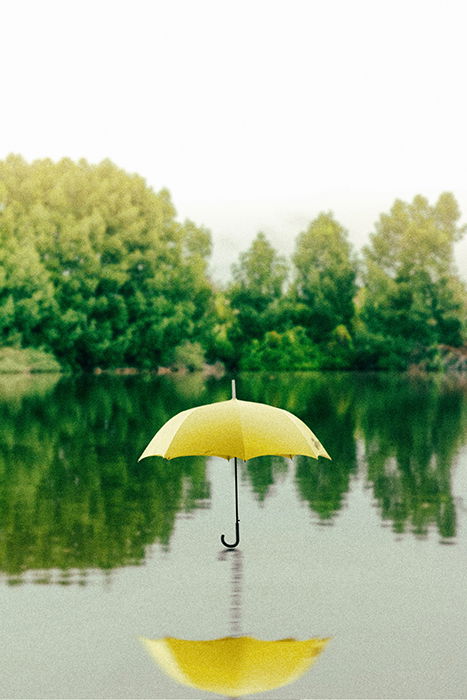
Since the 1920s, surrealism has been astounding people all over the
world. Back then, only a select few could experiment with it. Now,
anyone with a camera can recreate their wildest dreams. This opportunity
has allowed millions of artists to express their deepest fears,
emotions, and secrets without saying them aloud. For this reason,
surreal photography isn’t going anywhere.
The most beautiful thing about surreal photography is its openness to
all kinds of artists. The photos above prove that no amount of
minimalism, complexity, or strangeness can stop you from contributing to
surrealism. If you have a dream, you have every right to turn it into a
masterpiece. Why not start now?
----------------------------------------------------------------------------------------------------------------------
Free Photography Ebook
Autumn is arguably the best time of year for landscape photography.
While the other seasons alter landscapes in their way, none are as pleasing as experiencing leaves changing color and falling to the ground, creating a gentle blanket of red, yellow, and orange.
The combination of the scenery and cool air is a beautiful gift from Mother Nature.
------------------------------------------------------------------------------------------------
Ebay Camera Deals!
